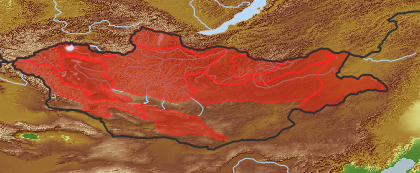| Class: | angiosperms |
| Order: | Santalales |
| Family: | Santalaceae |
| Name acc. to: | APGII |
| Herbar: | list records   |
| Description: | Usually root hemiparasites. Leaf blade simple. Bracts scale-like, small, sometimes forming involucre. Flowers bisexual or unisexual, actinomorphic, 3-6(-8)-merous, very small; perianth lobes 3-6(-8), slightly fleshy, stamens as many as (and opposite to) perianth lobes, ovary inferior or half-inferior, stigma capitate, small, truncate or lobed, flower with epigynous or perigynous disk, disk sometimes absent. Fruit a drupe or a nut. |
| Confuse with: | Rubiaceae |
| Tax. Comments: | Through molecular analysis the family is found to be not monophylletic and now object of major revision (Heywood 2007). |
| Comments: | Worldwide about 36 genera and 500 species which are widely distributed in tropical and temperate regions. |
| Link to Flora of China: | http://www.efloras.org/florataxon.aspx?flora_id=2&taxon_id=10791 |
| open map in a new window |  |
| genus: 1 |
| species: 5 |
| Habit (i)general appearance of a plant | |
| Parasite status: (i)Is the plant a half- or full parasite? | no parasite/saprophyte (i)Plant fully autonomous, leaves with chlorophyll
example: Most plants, Ranunculus
|
| Leaf (i)expanded, usually photosynthetic organ of a plant (including phylloclades) | |
| Leaf veination: (i)Arrangement of the main veins of a leaf. | pinnate (i)One main vein, several side veins, sometimes inconspicuous
example: Cicerbita   
|
| Flower (i)reproductive portion of the plant, consisting of sepals, petals, stamens, and pistils | |
| Flower appearance and pollination: (i)General appearance of the flower. | not attractive, wind-pollinated or some water plants (i)Small, colourless or green flowers
example: Betula, grasslike plants: Carex, Setaria, Juncus
|
| Flower symmetry: (i)Symmetry of the perianth leaves. Attention: to assess this character, look on sepals, petals and stamens, but neglect carpels and ovary. | radiary, regular (actinomorphic) (i)More than two axis of symmetry
example: Saxifraga: 5; Iris: 3 
|
| Style number: (i)Portion of the pistil connecting the stigma to the ovary. | 1
|
| Ovary position: (i)For entirely or partly fused carpels, describe their position in relation to the insertion point of perianth leaves (best done by doing a longitudinal section of a flower). | inferior (i)Ovary below the point where perianth leaves are inserted, always fused to an ovary
example: Vaccinum  
|
| Root / shoot below ground (i)plant part below ground (in most cases), including below ground shoots, without leaves | |
| Root type: (i)Organisation of the roots. | allorhizous (i)Plant with a conspicuous tap root, one larger tap root with side roots
example: Dicotyledonae  inherited by order Santalales: allorhizous inherited by order Santalales: allorhizous
|